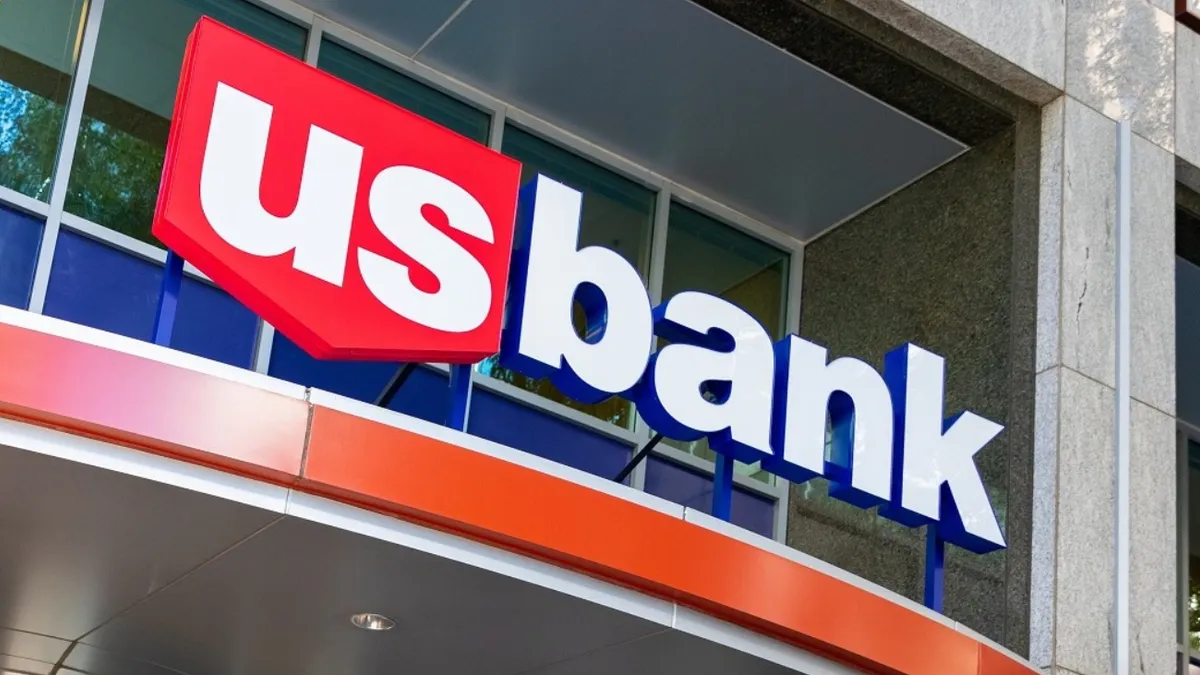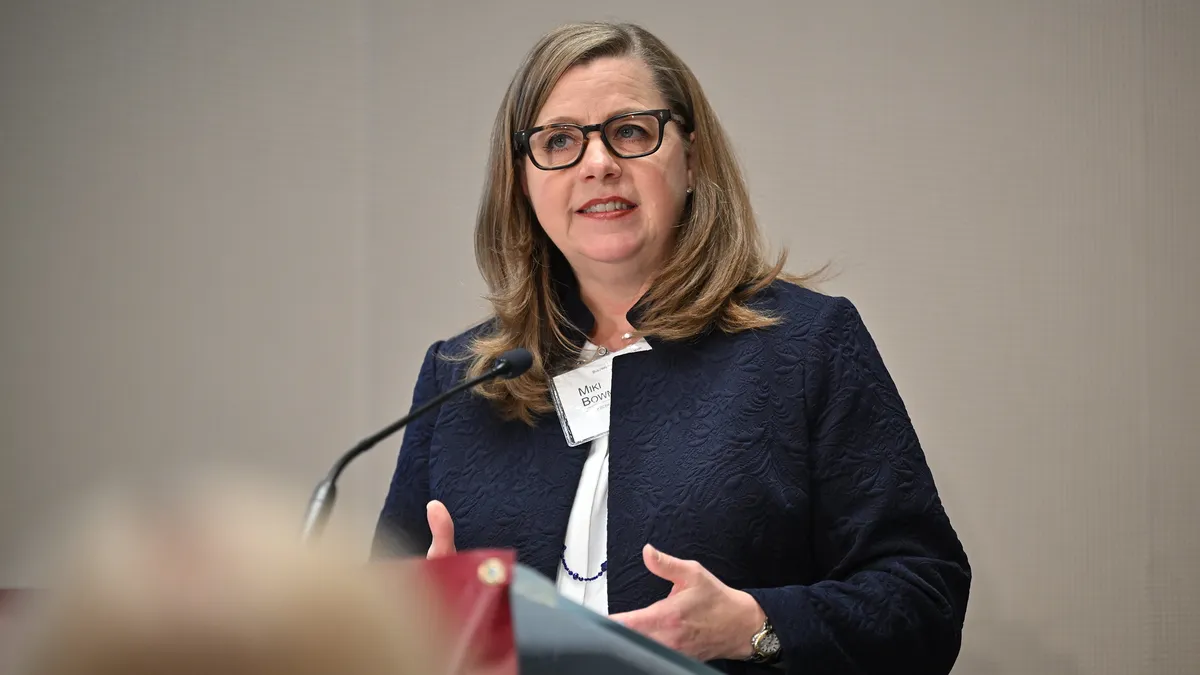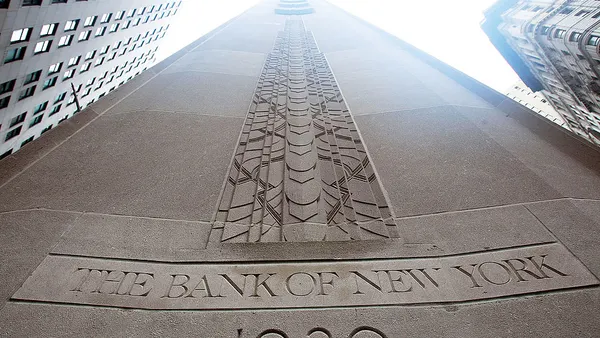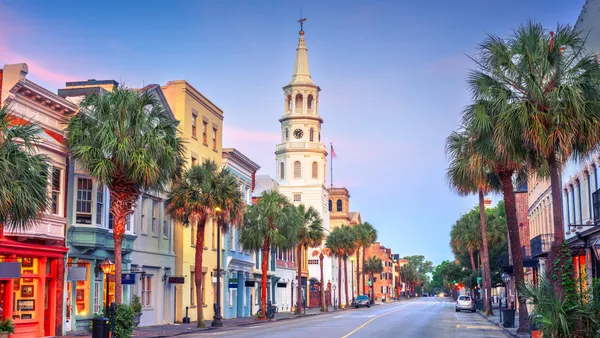Dive Brief:
- U.S. Bank CEO Andy Cecere pledged Thursday to grow revenues faster than expenses in the coming years, saying the lender has made needed investments and will better leverage its “set of unique businesses” than it has in the past.
- During the Minneapolis-based super regional’s investor day in New York City, Cecere said the bank has the right products, services and technology; now, the lender aims to boost revenue in part by expanding relationships with existing customers and improving employee productivity.
- U.S. Bank updated medium-term expectations for profitability targets, aiming for a return on tangible common equity in the high-teens and an efficiency ratio in the mid- to high-50% range. Some analysts, however, expressed skepticism of the bank’s ability to achieve what it’s targeting.
Dive Insight:
“Andy, I love you, but I don’t love the results,” Wells Fargo analyst Mike Mayo told the CEO during Thursday’s event. While the bank “presented a logical story … it was also a pretty logical story five years ago, and you fell short of those targets,” Mayo said.
Mayo pressed Cecere – a 39-year U.S. Bank veteran – on succession plans, wondering whether the bank is considering an external hire for its next CEO and who will be held accountable for targets set for 2027 if Cecere is no longer CEO.
Gunjan Kedia, who’d been the bank’s vice chair of wealth, corporate, commercial and institutional banking, was elevated to president in May, a move that suggested she’s a likely candidate to succeed Cecere.
Cecere told Mayo the bank has a “robust and thoughtful” succession planning process. He also defended investments the bank made in recent years, saying acquisitions and technology were needed “to stay ahead,” even though the bank’s lost ground in profitability against its peers.
“It was a short-term bump, for sure, you’re right,” Cecere told Mayo. “But I think we’re better positioned because of it. … We had to make those investments, particularly given the changing dynamic of the banking environment, and the competitive dynamics that were faced.”
The lender, which acquired MUFG Union Bank in 2022, is now at an inflection point and committed to delivering on its revenue and expense targets, Cecere stressed. With those investments behind it, profits are set to grow, executives said, and the bank is projecting positive operating leverage in the latter half of this year and beyond.
The bank “might benefit from a new set of eyes at the top,” Mayo wrote in a note to investors after the event. U.S. Bank “has a premium business mix that we believe should lead to better returns than demonstrated.”
Kedia’s presence at the event appeared to emphasize her status as “presumed heir apparent” to Cecere, Piper Sandler analyst Scott Siefers noted. Indeed, Cecere pointed to areas where Kedia is taking charge.
“As we think about our integration of acquisitions over the years, we've been wholly focused and very good at the technical integration, the expense takeout,” Cecere said. “We've – probably, I have not been as good at the go-to-market component and making that streamlined. We're doing that now. We're doing that now, and Gunjan is leading that across the business lines.”
Executives repeatedly highlighted the “interconnectedness” of the bank’s various business units, such as its ability to bundle payments and small-business banking. Given assurances that the bank’s investments are set to pay off, UBS analyst Erika Najarian said she continues “to view this as a ‘show me’ story,” according to a note to clients.
U.S. Bank, which had about $665 billion in assets as of June 30, expects to become a Category II financial institution – but not before 2027.
As it pursues greater scale across the country, U.S. Bank is focused on increasing the density of its branch network in high-growth markets within its existing footprint, and is betting on its digital capabilities and its partnerships with Edward Jones and State Farm to “attack” areas of the country where it lacks branch presence – largely the southeast and Texas, Kedia said.
U.S. Bank would like to acquire a southeastern lender at some point, Kedia said, adding that would “just take the problem away.” The regulatory environment, though, is making that an “uncertain strategy,” and the bank is opting to pursue organic expansion, she said.
The trade-off with the Edward Jones and State Farm partnerships is that they’re “narrow,” Kedia added. “We would prefer to have our own branches in certain locations … but this gives us so much reach,” she said.
It’s “not a sensational strategy, but it's a disciplined, measured way of expanding our presence in the places we need to be, and we're very satisfied with that,” Kedia said.
The bank may pursue bolt-on acquisitions, but it’s otherwise focused on internal, organic growth, Cecere said.
“We’re not going to hinge our strategy on some large deal, or even some small or medium deal right now,” he said.
Within the bank’s payments business, Shailesh Kotwal, the bank’s vice chair of payment services, noted executives feel comfortable with what the lender has.
Still, “the unpredictable piece here is, technology evolves so quickly,” and the bank may need to reevaluate, he said.
“Two years from now, there could be something out in the marketplace that is mind-blowingly great,” Kotwal said.
The story U.S. Bank told Thursday is “compelling,” Oppenheimer analyst Chris Kotowski said, but he questioned whether it was “convincing.”
Although there’s “no doubt that USB has an incredibly durable and valuable franchise in its core business,” it’s “interesting to ponder the future fate of banks like USB,” Kotowski wrote. “We doubt that other players without significant branch systems can make major inroads into USB's markets, but we similarly doubt that USB will make meaningful inroads into the parts of the country that they're not in.”
Siefers, similarly, summarized: “From here, the rubber will need to meet the road.”













